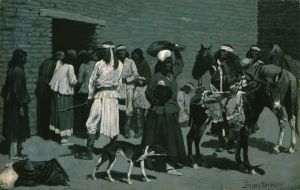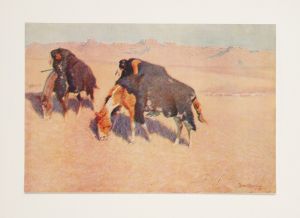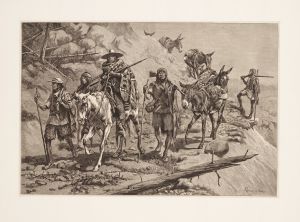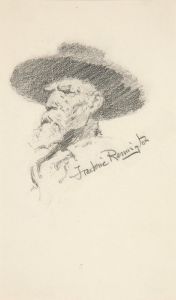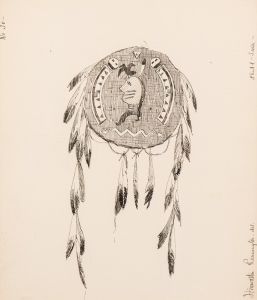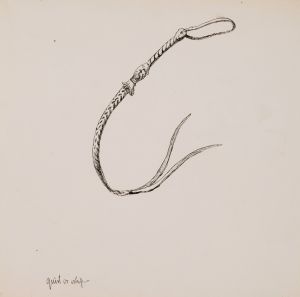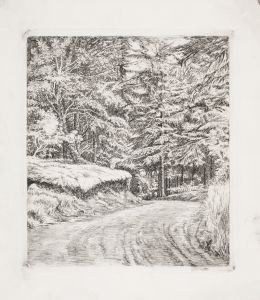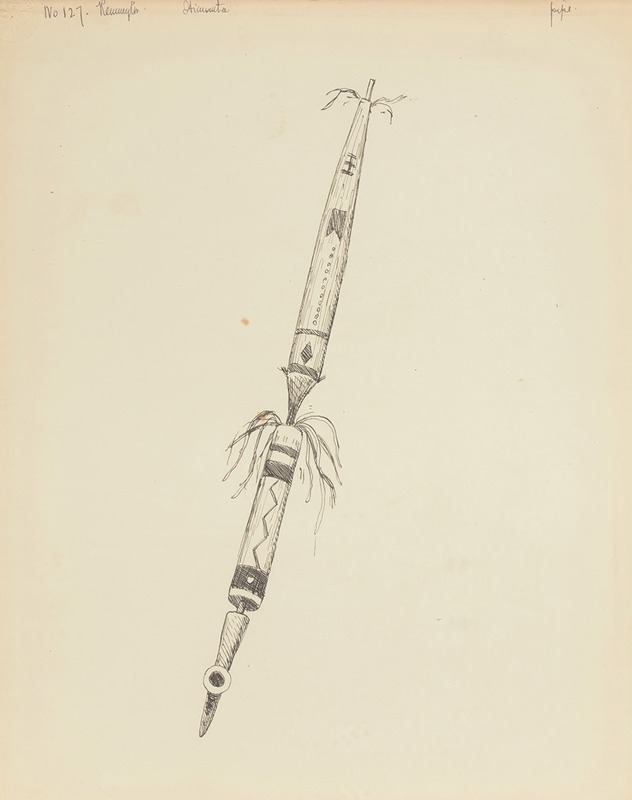
Pipe, illustration from The Song of Hiawatha
A hand-painted replica of Frederic Remington’s masterpiece Pipe, illustration from The Song of Hiawatha, meticulously crafted by professional artists to capture the true essence of the original. Each piece is created with museum-quality canvas and rare mineral pigments, carefully painted by experienced artists with delicate brushstrokes and rich, layered colors to perfectly recreate the texture of the original artwork. Unlike machine-printed reproductions, this hand-painted version brings the painting to life, infused with the artist’s emotions and skill in every stroke. Whether for personal collection or home decoration, it instantly elevates the artistic atmosphere of any space.
Frederic Remington was an American artist known for his depictions of the American West, particularly in the late 19th and early 20th centuries. His works often focused on cowboys, Native Americans, and the U.S. Cavalry, capturing the spirit and challenges of life on the frontier. Among his many illustrations, Remington contributed to the visual representation of Henry Wadsworth Longfellow's epic poem, "The Song of Hiawatha."
"The Song of Hiawatha," published in 1855, is a long narrative poem by Longfellow that draws upon Native American legends, particularly those of the Ojibwe and other tribes. The poem tells the story of Hiawatha, a legendary Native American leader and hero, and his various adventures. It was immensely popular in the 19th century and contributed to the romanticized view of Native American culture in American literature.
Frederic Remington's illustration, "Pipe," is one of the artworks created to accompany "The Song of Hiawatha." While specific details about this particular illustration are limited, it is consistent with Remington's broader body of work, which often emphasized authenticity and attention to detail. Remington was known for his ability to capture the essence of his subjects, and his illustrations for "The Song of Hiawatha" would have been no exception.
In creating illustrations for Longfellow's poem, Remington would have been tasked with visually interpreting the text, bringing to life the characters and scenes described by Longfellow. This would have involved a careful study of Native American culture and traditions, as well as an understanding of the poem's themes and narrative structure. Remington's work in this context would have been informed by his extensive travels in the American West and his firsthand observations of Native American life.
Remington's illustrations for "The Song of Hiawatha" would have been part of a broader trend in the late 19th and early 20th centuries, where artists and writers sought to capture and preserve the rapidly changing American frontier. This period saw significant shifts in the lives of Native Americans, as well as the expansion of American territories and the transformation of the landscape. Artists like Remington played a crucial role in documenting these changes and shaping public perceptions of the American West.
While "Pipe" as an individual illustration may not have extensive documentation, its significance lies in its contribution to the visual and cultural legacy of "The Song of Hiawatha" and Remington's overall oeuvre. Through his work, Remington helped to create a lasting image of the American West and its inhabitants, one that continues to influence popular culture and historical understanding to this day. His illustrations remain a testament to his skill as an artist and his dedication to capturing the spirit of a bygone era.





